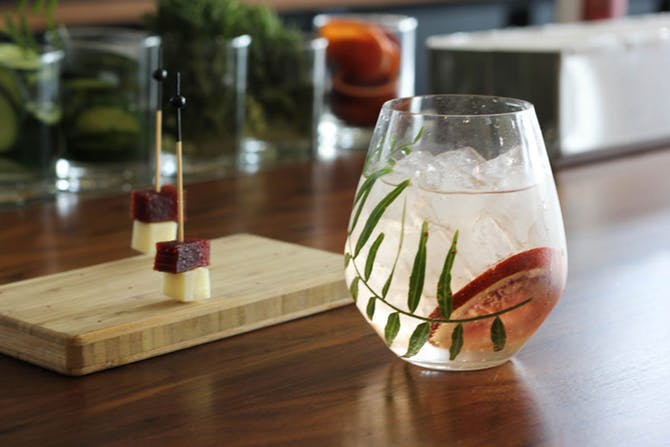Introduction
So you’ve finally realised that gin is quite simply the only drink that you’ll ever want to enjoy ever again but how best to do it?
There’s a lot more to drinking and enjoying an artisan gin than just sploshing it into a glass and glugging it back. There has to be due ceremony and a bit of love added to the process.
But here’s the best bit – you most definitely do not need to spit the gin out! A lot of love goes into the making of the gin and it would be downright disrespectful to discard it!
Drinking gin without having to think about it too much is a joy in itself, but if you really want to take your gin appreciation to the next level, here’s a handy guide to tasting like a pro.
Don’t worry if you find it hard to identify smells and tastes to start with – it gets easier with practice (we are not complaining!). Also, don’t be put off using the botanicals list on the bottle to help you with identification as you’re getting the hang of it.
You can choose to taste a single gin at a time (your Craft Gin Club Gin of the Month, perhaps?), or you could gather some friends and make an evening of it, selecting a small line-up of gins to compare and contrast together. However you approach it, the main thing to remember is: it should be fun!






Ok, some background first: What to look for on the palate
Gin tends to be powerfully flavoured, so there’s no need to draw air through the liquid to your palate, but rolling the spirit around your mouth to coat it before swallowing will enable you to fully taste it. In a similar way to wine tasting, on both nose and palate you are looking for balance (in this case, between botanicals), length and complexity. You should have a journey between the top and bottom notes. Well crafted, well distilled gin should be smooth when tasted neat, with the warmth felt in your chest and not under your eyes!
Then how does it mix with tonic? Are the botanicals overwhelmed by quinine or do they mix perfectly to give a rounded, refreshing drink?
You should be looking for a clean flavour profile where you can set apart the botanical components. A high quality base spirit will provide a clear background; a “burn” on the palate is indicative of lower-quality spirit.
If you’re tasting with tonic, we recommend a low-calorie tonic. The sugar in full-fat tonic can suppress the flavour profile.

STEP 1: SET THE SCENE
Class in a glass
Before you even get your hands on that beautiful gin, you have to choose your gin glass and choose it wisely. What’s the best gin glass? Well, that’s a big debate of its own – some advocate a rocks glass in order to let the air circulate, others go completely the other way and insist that an inward-curving, stemmed glass (such as a small wine glass) is best, as it captures all the gin aromas without your hands heating up the spirit. Many mixologists will choose a tall, wide glass to let plenty of air circulate in the drink.

The Gin Passport highly recommends a stemless wine glass – all the curves to enjoy the aromas and very classy. We use the Nataniël collection of stemless wine glasses and they are absolutely perfect!

Temperature matters
Get your gin to room temperature before you start (21-23°C) as the flavours and aromas can be affected if it’s too hot or cold. You should also begin the tasting without using any ice, tonic or garnish – but do have some plain water to hand for later.
Pens poised
You want to be able to make notes about what you’re smelling and tasting – after all, if you get too carried away, your memory might not be that reliable! If you’re tasting with a group of friends or family, it’s also fun to compare notes at the end – you can even ascribe a score to each step and to the overall gin if you want to get really competitive!
Wash your mouth out!
Well, not literally, but it is best to make sure you don’t eat strongly flavoured foods such as garlic or chilli – and it goes without saying that chewing gum is a no-no! If you want to cleanse your palate before you start, a sip of cold, weak coffee or even just a little sniff of some fresh coffee beans can help. It sounds weird, but trust us – it’s a trick used by pro-tasters.
Sniff coffee to cleanse the palate in between sips – Coffee beans reset your nasal passages so you can stay sensitive to the aromas.”

STEP 2 – FOLLOW YOUR NOSE
One of the true joys of a quality gin is the subtle aromas that it treats your nose to. Once you’ve poured your gin, gently swirl the glass around for a few seconds and take a small sniff of the drink. The botanicals can work their magic at this stage.
Be careful not to take a huge sniff of your gin, as you’ll just find yourself with a face full of alcohol fumes. You don’t want to be overpowered before you even get to taste it! Instead, give the glass a gentle swirl to release the gin’s aromas and, with the glass 3-4 inches from your face, breathe in gently with your mouth very slightly open. According to the nosing panel, that the more air there is, the easier it is to detect flavours, that’s why sommeliers slurp wine sometimes. Gordon’s nosing panellists advise you to hold the glass to your nose, but not to give it a big sniff to avoid inhaling too much of the perfume aroma which can be overpowering. Be careful on this first sniff, you may still be picking up lots of alcohol. Breathe gently and let the aromas take hold.
The most common aromas associated with gin are citrus, fruit, floral, earthy, spicy, sweetness, wood and herbs. What can you smell? Sharp citrus? Piney juniper? Sweet spice? Whatever you’re picking up at this point are the ‘top notes’.
Don’t make yourself nose blind
When sampling gin, nose and taste it first at room temperature, and neat. It will allow the nuances of the gin to be most apparent, though it will mean the alcohol will feel at its most powerful, but always sip, don’t shoot – take your time. Over-sniffing neat samples can lead to you going “nose blind” though, so make sure you give your nose a break.
Get hands on
However careful you’ve been on this first sniff, it’s still quite likely that you’re still picking up quite a lot of alcohol. One clever trick to get rid of some this alcoholic hit is to use your hands. Placing your hand carefully over the top of your glass so it’s completely covered, tip the glass upside for a second to wet your palm with gin. Place the glass back on the table and wipe (not rub) your hands together, cup them and take a good sniff, noting down any extra nose notes that you’re picking up.
They also recommended placing a hand over the top of your glass so that it’s completely covered and tipping it upside down for a second to wet your palm with the gin. Then wipe your hands, cup them, and sniff from there.
STEP 3 – Time to taste… and no spitting!
The groundwork you laid by smell a moment ago will stand you in good stead for the bliss that artisan gin will provide to your taste buds. Those subtle aromas that you enjoyed by smell will be there in taste but you’ll more than likely get some other characteristics coming through too. Swirl the gin around your mouth and gently breathe in as you savour the flavour. Yum!
Take a small first sip and see if you can detect the same flavours that you did when nosing the gin. It should be “warm with a light alcoholic heat”.
Let the spirit rest on the tongue, then swirl it around the mouth to detect any other aromas, like citrus, liquorice, cinnamon, aniseed or herbs. Swallow the gin and pause to detect which tastes linger
Here are a few terms to help you identify what your senses are detecting:
Aromatic | Buttery | Delicate | Dry | Earthy | Floral | Fresh | Fruity | Full | Grassy | Herbal | Lingering | Medicinal | Mellow | Nutty | Perfumed | Peppery | Piney | Savoury | Sharp | Soft | Sour | Spicy | Sweet | Warming
You may find this first tasting bitter because of the alcohol, but can you also detect some of the nose notes you wrote down before, or are the notes very different in your mouth? Do more flavours emerge as you swill it and swallow it? How does your palate feel after you’ve swallowed? Dry? This may indicate root botanicals like orris or angelica. Sour? This could be coming from citrus, such as lemon peel. Does the taste linger or is it short-lived?
Watered down
For your next tasting, dilute the gin with a little plain water. Just mix in a drop to start with, adding more if required – the idea is to remove some of the sharp hit from the alcohol and release the different layers of botanicals and spice, without washing the flavours out completely. Note down any new notes you can pick up, remembering there are real ingredients in here to be found and savoured (again, feel free to refer to the bottle’s botanical list to help your taste buds).
Rinse and repeat
You may want to try this whole process several times for each to really understand it properly – but if that feels like enough concentrating already, you can also just move straight on to step three!
Experiment and repeat
So you’ve tried your artisan gin neat, why not try a Gin and Tonic now or go even further and make a cocktail
STEP 4 – MIX IT UP
As a final step, we’d recommend mixing a gin and tonic – this is a great way to see how the gin changes when it’s in more of an everyday context. Avoid over-diluting the gin – in a tasting, we’d go for one part gin to two parts tonic, but feel free to go for three parts tonic according to your own taste. You can either use the distiller’s recommended garnish for that particular gin, or select a garnish that you think might work based on your own tasting notes – think about complementary flavours in the same way you would when cooking.
As you sip your G&T, you can go through your notes, compare them with your tasting companions, and make up your mind exactly what you think of your gin.
Cheers!
Information courtesy of the following sites – refer to them for some interesting facts!
https://www.decanter.com/spirits/how-to-taste-gin-ask-decanter-382912/#fEYqCTumI8I08EtS.99
https://www.businessinsider.com/how-to-taste-gin-2018-6?IR=T
https://www.craftginclub.co.uk/ginnedmagazine/2016/2/24/how-to-taste-gin
https://www.decanter.com/spirits/how-to-taste-gin-ask-decanter-382912/

